Last updated on March 3rd, 2024 at 01:59 am
In the world of indoor plants, few are as beloved and easygoing as the golden pothos (Epipremnum aureum). With its lush, heart-shaped leaves and easygoing nature, this plant has earned a special place in the hearts of both novice and experienced gardeners alike, adding a touch of natural beauty to any space. The golden pothos plant is a wonderful choice that brings a breath of fresh air into your home. Whether you’re a seasoned plant enthusiast or just starting your journey into the world of indoor gardening, it is ready to brighten your space with its charm and low-maintenance personality.
Let’s explore the wonders of this beautiful plant and discover why it has become a favorite among plant lovers worldwide. The golden pothos, often referred to as devil’s ivy, is scientifically known as Epipremnum aureum and belongs to the Araceae family. Its maximum height is up to 10 feet (3 meters). It is an amazing plant because it can survive and thrive in many different places. It’s like a true survivor, doing well even in spots with not much sunlight. So, if your room doesn’t get a lot of natural light, no worries! This plant is happy there.
But, it’s also cool because it can handle brighter places too, as long as it doesn’t get direct sunlight that might hurt its delicate leaves. So, whether your space is bright or a bit dim, The golden pothos plant is ready for any space.
Contents
Types of Golden Pothos
Let’s meet some of the captivating types of:
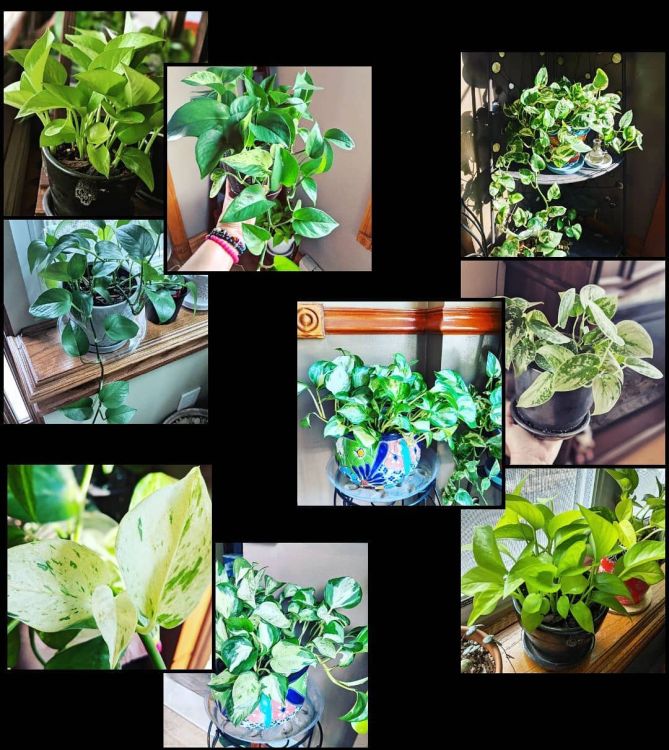
Image credit:#pothoslove1
Golden Queen

Image credit:#pothoslove1
The ‘Golden Queen’ Golden Pothos is known for its eye-catching golden-yellow leaves.
Marble Queen

Image by rawpixel.com on Freepik
The ‘Marble Queen’ Golden Pothos has a beautiful combination of green and white marbled patterns on its leaves.
Jade
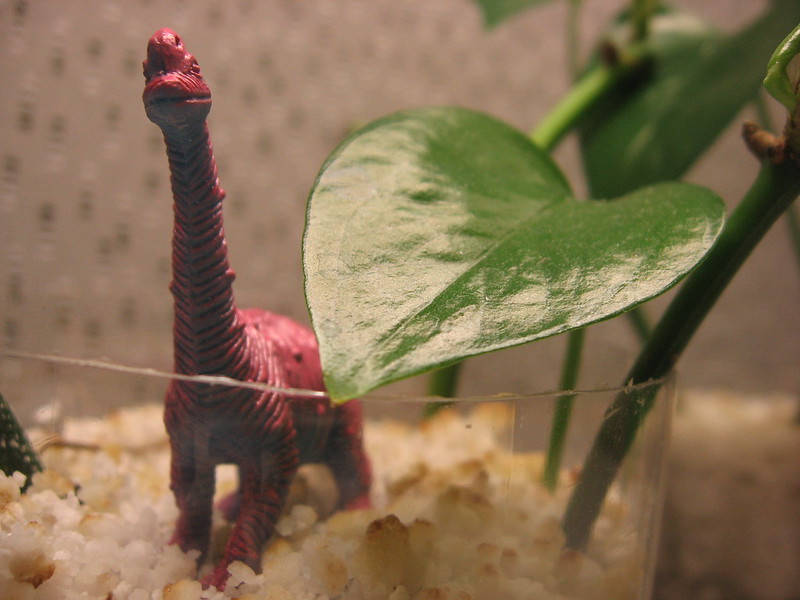
The ‘Jade’ Golden Pothos is recognized for its plain green leaves, making it a non-variegated variety. The photo above is courtesy of Qfamily.
Neon
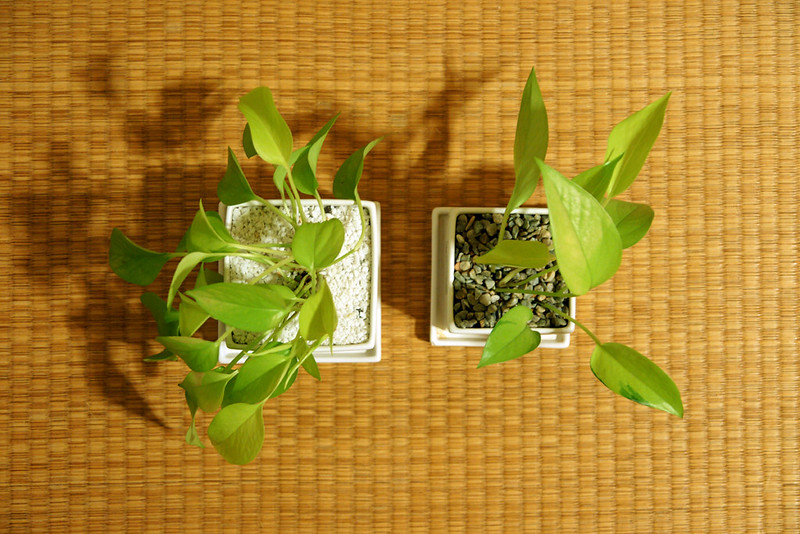
This type has bright, nearly fluorescent green leaves. The photo above is courtesy of Kotaro Iwaoka.
Manjula
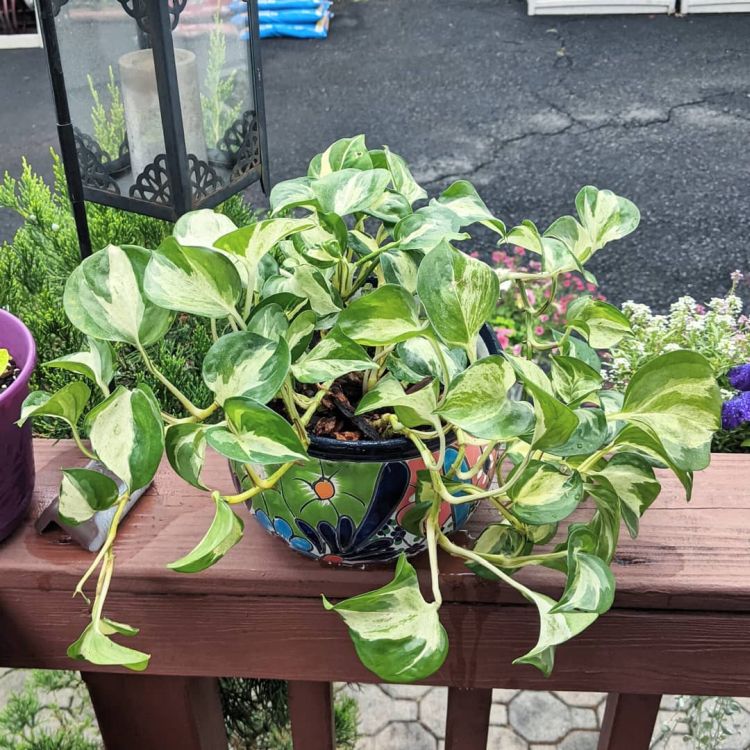
Image credit:#pothoslove1
It’s easy to identify this type by the silvery-white patterns on its leaves.
Caring for Golden Pothos
Taking good care of your golden pothos helps it stay healthy and live a long time. The good thing is, this plant doesn’t need a lot of care and is easy to take care of, so it’s great for both beginners and experienced gardeners.
- Light
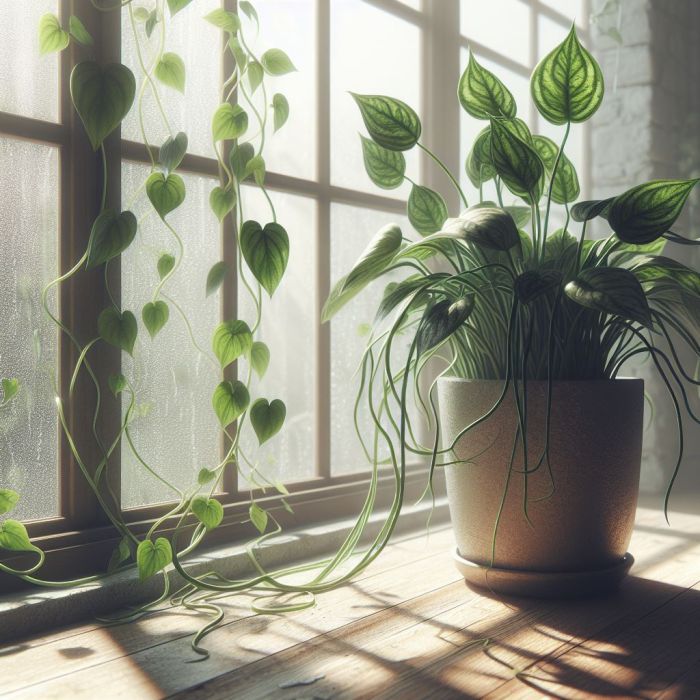
Golden Pothos does well in medium to bright light, but it’s important to avoid direct sunlight as it can harm the leaves. The plant can also tolerate dim light, but less light might reduce the vibrant colors of its leaves. Even in lower light conditions, the plant will continue to grow. The photo above is courtesy of Forest and Kim Starr.
- Watering
Wait until the soil on top feels dry before you water your golden pothos. Don’t give it too much water because that can make the roots sick. And, make sure the pot has holes at the bottom so the water doesn’t stay there.
- Soil
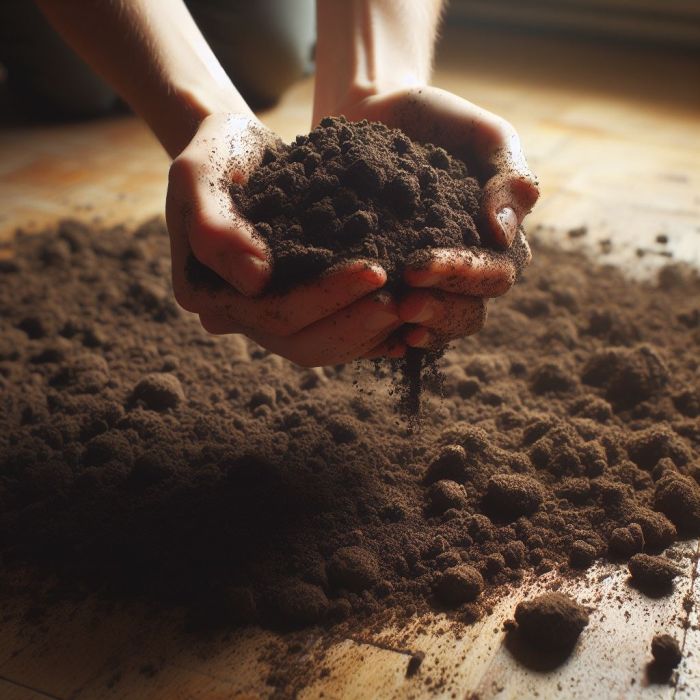
Choose a good soil for your Golden Pothos that lets water drain well. You can use a regular indoor plant mix or make your own by mixing equal parts of perlite, peat moss, and regular potting soil. This helps your golden pothos grow happily by providing enough air and letting extra water flow away. The photo above is courtesy of Twentyfour Students.
- Temperature And Humidity
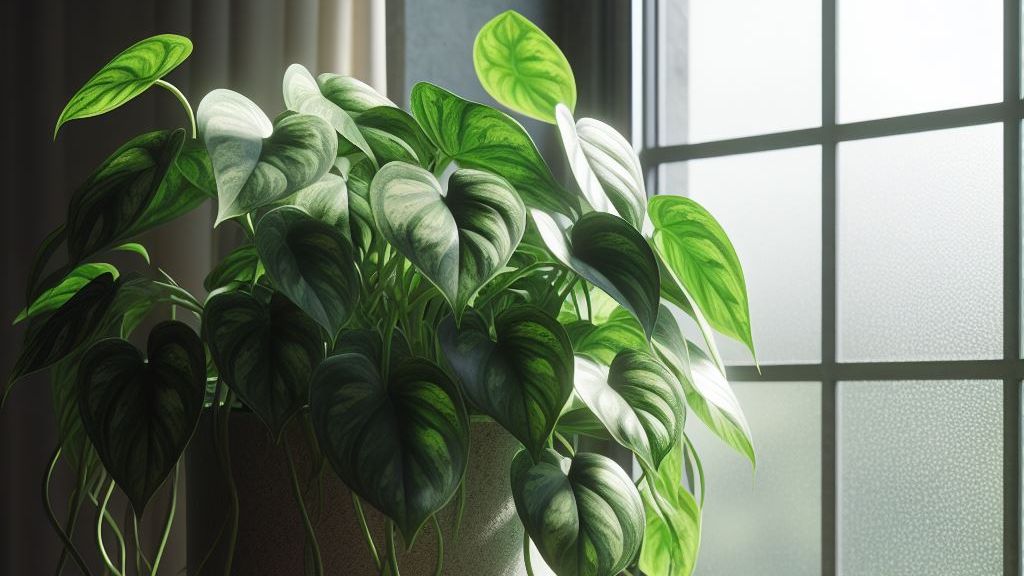
Golden Pothos can handle various temperatures, but they thrive best between 65-75°F (18-24°C). They grow well even if it gets a bit cooler, but try to keep them away from direct sunlight and significant temperature changes. They’re fine with the regular humidity levels in homes, but they can also handle slightly drier air.
- Fertilizer
In spring and summer, when your Golden Pothos is growing a lot, give it some balanced liquid fertilizer every 4-6 weeks. But during the fall and winter seasons, you can reduce or stop giving it fertilizer. This way, you’re providing your plant with what it needs during its active periods and allowing it to take a break when it’s not growing as much.
- Repotting
You don’t need to change your Golden Pothos’ pot a lot. Only do it if the roots are crowded, and the soil doesn’t have enough food for the plant. This usually happens every 2-3 years.
- Trimming
To keep your Golden Pothos looking nice and healthy, give it a little trim. Take off any yellow or damaged leaves regularly. If you want it to grow thicker, you can also pinch the tips. This makes the plant bushier and more strong.
- Growth Patterns Of Golden Pothos
Golden Pothos grows a lot and can reach up to 10 feet (3 meters) tall in the right conditions. It’s great for hanging baskets, trellises, or as a plant that trails down from a shelf.
Propagation Of Pothos Plant
Golden Pothos can be propagated through various methods.
Propagation Through Cuttings
Cut a piece of Golden Pothos that’s about 4-6 inches (10-15 cm) long, making sure it has at least a leaf and a node. Put it in water until it grows roots, which usually takes 3 to 4 weeks. After that, you can plant it in the soil.
Propagation Through Air-layering
Air-layering is another effective method. Cover a part of the stem with roots in damp sphagnum moss. When the roots grow, cut it and plant it in the soil.
Division
If your plant gets big and bushy, you can divide it into separate plants when you’re changing its pot.
Common Issues Of Pothos and Their Solutions
Yellow And Droopy Leaves
If your plant’s leaves are turning yellow, it might be getting too much water or not enough light. Try watering less and moving it to a brighter place.
Pest
Make sure to regularly check your plant for pests such as spider mites, mealybugs, and aphids. If you find them, using insecticidal soap or neem oil can effectively treat the issue.
Root Rot
To prevent root rot, make sure the pot has good drainage holes, and don’t water your plant too much.
FAQS
Is it suitable to apply fertilizer to my golden pothos, and if yes, how frequently should I do so?
Absolutely, during the periods of active growth in spring and summer, consider applying a well-balanced liquid fertilizer every 4-6 weeks. Reduce or stop fertilizing during the fall and winter when the plant is less active.
What is the reason behind the nickname “devil’s ivy” for the golden pothos?
The golden pothos is often called devil’s ivy due to its ability to thrive in various conditions, even in low light. This nickname highlights its hardy and adaptable nature.
How often should I water my golden pothos?
Allow the topsoil to dry out before watering your golden pothos. Overwatering can lead to root issues, so it’s essential to let the soil dry out between waterings.
The golden pothos isn’t just a plant; it’s like a good friend that makes our homes look nice and clean. It can live happily in a small apartment or a busy office, making it perfect for anywhere. This plant not only looks pretty but also helps keep our air fresh. Just follow the easy care tips, and you’ll have happy and healthy golden pothos in your home for a long time. So, why not bring this wonderful plant into your life now? Enjoy the happiness it brings and have fun taking care of your golden pothos.


3 thoughts on “Beautiful Types of Golden Pothos”